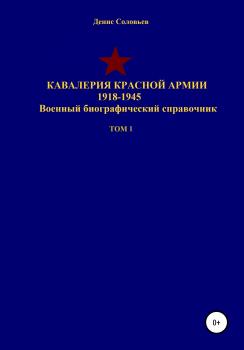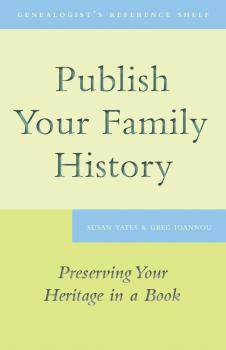Справочная литература: прочее
Различные книги в жанре Справочная литература: прочееГде проходят альтернативную гражданскую службу
Выбор альтернативной гражданской службы ставит перед призывником немало вопросов. От чего зависит распределение к месту службы? Какие исключения есть из общего правила? Существует ли возможность служить в регионе проживания? На эти и другие вопросы отвечает практикующий юрист, автор двух книг об особенностях призыва на военную службу и прохождения альтернативной гражданской службы. В настоящей книге рассматриваются проблемы, с которыми сталкиваются альтернативнослужащие, и судебные процессы с их участием. Издание рекомендуется призывникам, работникам военкоматов и членам призывных комиссий, юристам и правозащитникам.
Кавалерия Красной Армии 1918-1945 гг. Том 1
В биографический справочник "Кавалерия Красной Армии 1918-1945 гг." вошли 3000 биографий высшего командно-начальствующего и политического состава Красной Армии, проходивших службу в кавалерийских частях с 1918 по 1945 гг. на должностях командир, помощник командира, начальник штаба, военный комиссар, помощник по политической части командира, начальник политотдела, – кавалерийского корпуса, дивизии, бригады, полка. Справочник составлен на базе учетно-послужных карт и списков командного состава Красной Армии. Многие биографии публикуются впервые. В 1 том вошли биографии с фамилиями на букву А часть 1.
Mediating Interpersonal and Small Group Conflict
This is a guide to the theory and practice of mediation. It sets out a systematic approach to the use of mediation and to assuming the role of mediator. This book will be one of value to individuals interested in becoming mediators, to parties in conflict considering recourse to mediation to resolve issues, to students studying mediation as a dispute resolution alternative, to professionals who use mediation techniques in their day-to-day work, and to practising mediators who wish to expand and update their skills.
Now You Know, Volume 4
Building on the success of his previous bestsellers, Now You Know , Now You Know More , and Now You Know Almost Everything , this fourth volume is headed straight for the bestseller list! It is Doug Lennox at his best as he masterfully dispenses the answers to quirky questions, never losing sight of the joy of discovering the «why» of ordinary things. Discover the fascinating histories behind people, places, and words: WHY DO WE SAY THAT SOMEONE WHO HAS BEEN TREATED BADLY HAS BEEN «HUNG OUT TO DRY»? Discipline on early British sailing ships was necessary but often extreme. The cat-o'-nine-tails left sailors scarred for life, but keelhauling (tying a victim with a rope and pulling him under a ship) was feared most. If the prisoner survived, he was suspended from a yardarm where he was left hanging for a predetermined period of time. WHY IS A MILITARY DINING HALL CALLED A «MESS»? The term goes back to the Middle Ages, when British sailors began calling their meagre and often grub-infested meals a «mess.» It evolved into meaning the general area where the sailors gathered to eat. Later it referred to a specific area where men gathered to eat, drink, and socialize.
A Call to the Colours
Beginning in Canadas earliest days, our ancestors were required to perform some form of military service, often as militia. The discovery that an ancestor served during one of the major conflicts in our history is exciting. When you find a family name on a Loyalist muster roll, a Canada General Service Medal with an ancestors name engraved on it, a set of First World War attestation papers, or a box of Second World War medals, you realize that one of your ancestors faced challenging events beyond the scope of ordinary living. There are ways to trace their journeys and thus flesh out a more complete story of the history of your family. A Call to the Colours provides the archival, library, and computer resources that can be employed to explore your familys military history, using items such as old photographs, documents, uniforms, medals, and other militaria to guide the search. The book is generously illustrated with examples of the sorts of artifacts and documents you can find.
Genealogical Standards of Evidence
Genealogical evidence is the information that allows us to identify an individual, an event in his or her life, or the relationship between individuals. In such a process, we often hear or use words such as evidence, proof, or documentation. Brenda Dougall Merriman takes readers through the genealogical process of research and identification, along the way examining how the genealogical community has developed standards of evidence and documentation, what those standards are, and how they can be applied. As a supplement to courses, workshops, and seminars, this book provides both an in-depth and inexpensive reference, perfect for compiling and checking research notes.
Now You Know Baseball
While baseball is touted as America's favourite pastime, everyone will know the score with this grand slam of Q&A that's sure to be inducted into the Hall of Fame. Doug Lennox hammers it out of the park by filling us in on who's won the most Cy Young Awards, what the Green Monster is, and the five ways that a player can be called «out.» In this treasure trove of baseball lore, you'll learn all about the leagues and teams that have come and gone, the players who are legends, and the achievements and records that have become the stuff of myth and fable. Where and when did Babe Ruth hit his first professional home run? What major league team was known as the Blue Jays long before a team existed in Toronto? Who were the Bash Brothers? Where was baseball first played? Who wrote the song «Take Me Out to the Ball Game»? Did Fidel Castro try out for the New York Yankees?
Genealogy and the Law in Canada
Digital records and broad access to the Internet have made it easier for genealogists to gather relevant information from distant sources and to share the information they have gathered. The law, however, remains tied to particular geographic locations. This book discusses how specific laws – access to information, personal data protection, libel, copyright, and regulation of cemeteries – apply to anyone involved in genealogical research in Canada.
Conserving, Preserving, and Restoring Your Heritage
Artifacts, whether found in museums, our community, or our homes, offer glimpses into the past. Be they documents, photographs, books, or clothing, as custodians of our history, we're faced with how to maintain these items. Professional conservator Kennis Kim tells us how. Topics discussed include: creating an accession list; the nature of conservation, restoration, and preservation; deciding on display, storage, or using the artifact; common threats such as light, humidity, insects, and rodents; and when to call a professional. Here is all that's needed to determine what can be done to preserve precious articles for future generations.
Publish Your Family History
Many people want to write a family history, but few ever take on the job of publishing one. If you’ve done the research, and you want to make a book from it, then Publish Your Family History is for you. It will tell you all the fundamentals of book production, together with the important details that distinguish a home-published book from a homemade one. You’ll learn: how to get your manuscript ready for production; design ideas for the pages and the cover; methods of making pages with or without a computer and printing those pages quickly and inexpensively; and ideas on bindings that last and look great. Even if time is at a premium, you’re not comfortable with computer technology, or the budget is tight, you’ll learn how to publish a professional-looking family history of your own!









